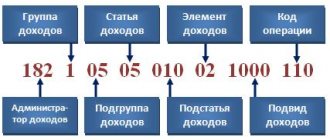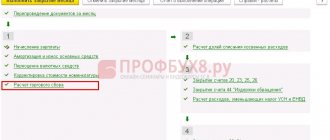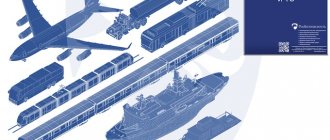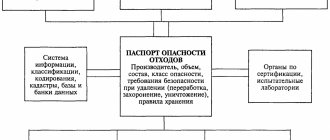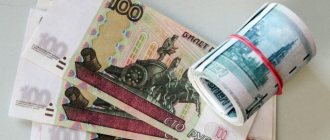The trade tax (TS) is regulated by the Tax Code of the Russian Federation, Chapter 33. It can be introduced in cities of federal significance and in municipalities. Today, this type of tax has been in effect in the capital of the Russian Federation since July 1, 2015, on the basis of Moscow Law No. 62 of December 17, 2014, and has not yet been introduced in St. Petersburg and Sevastopol. Municipalities will be able to introduce a fee after the publication of an additional Federal Law. The region where the CU was introduced sets its own rates and benefits. In this article we will look at how to calculate the trading fee for a month or an incomplete quarter in Moscow.
Where and how is the trade tax introduced?
The trading fee is introduced according to the following algorithm.
In the federal cities of Moscow, St. Petersburg and Sevastopol, in order to introduce a trade tax, it is enough for these cities to adopt their respective laws. Currently, such a law has been adopted only in Moscow (see “Trade tax in Moscow: who, how and when should pay it”).
Fill out a payment form for payment of the trade fee in the web service
And in the municipalities of Russia (urban and rural settlements, urban districts, municipal areas), the introduction of a trade tax requires the fulfillment of two conditions. Firstly, the corresponding federal law must be adopted, one for all municipalities (clause 4 of article 4 of the federal law of November 29, 2014 No. 382-FZ). Secondly, the representative body of the municipality must adopt its own separate regulatory legal act (law, decision or resolution) dedicated to the trade fee. To date, the mentioned federal law has not yet been adopted. As a result, the trade tax has not been introduced in any municipality.
How do general rules and local specifics relate?
The rules for calculating and paying trade taxes are set out in Chapter 33 of the Tax Code. The provisions of this chapter are the same for all subjects and municipalities of the Russian Federation, but local authorities have the right to establish some features within the framework of general rules.
Thus, a region or municipality can approve its own tax rates. Local rates may not be uniform, but differentiated, that is, depending on the category of the payer, the territory, the type of trade and the object of trade. At the same time, Chapter 33 of the Tax Code of the Russian Federation establishes the maximum permissible rate, which local authorities have no right to exceed. But there is no lower limit. In other words, municipalities can approve a rate of zero.
In addition, local authorities are allowed to establish their own benefits, as well as the grounds and procedure for their application.
After the trade tax is introduced in a particular municipality, information about tax rates and benefits can be obtained from your tax office.
What types of trade are subject to the trade tax?
The trade fee is provided for trade through objects of a stationary trading network (with the exception of gas stations), through objects of a non-stationary trading network, for trading by releasing goods from a warehouse and for activities related to the organization of retail markets.
Trade refers to activities related to retail, small retail and wholesale purchase and sale of goods through retail chains and warehouses. The activity of organizing markets is the work of market management companies. Such activities are regulated by Federal Law No. 271-FZ dated December 30, 2006.
Please note: the types of trade mentioned above are subject to a trade tax only if the company or individual entrepreneur uses any property for sales. It can be either movable or immovable; both own and rented. Such property is called an object of trade.
It is important for sellers to understand whether the premises from which goods are shipped are considered a trading facility. Chapter 33 of the Tax Code of the Russian Federation does not give a direct answer. According to experts from the Russian Ministry of Finance, it all depends on whether it is possible to determine the area of a retail facility. That is, is this room intended for displaying and demonstrating goods, servicing customers, conducting cash settlements with them and passing customers through? If yes, then such a premises is recognized as an object of trade, and, as a result, sales are subject to a trade fee (letter dated July 15, 2015 No. 03-11-10/40730).
In practice, many questions arise regarding which types of retail and wholesale sales are subject to trade tax. It is impossible to draw clear conclusions from the text of Chapter 33 of the Tax Code of the Russian Federation, therefore payers are guided by the explanations of officials (see table).
What types of trading activities are (are not) subject to trade tax?
| Type of trading activity | Taxable / not taxable | Officials' comments |
| Sales of collateral by a pawnshop | is not a subject to a tax | letter of the Ministry of Finance of Russia dated July 15, 2015 No. 03-11-10/40730 |
| Sale of food products by catering establishments | taxed in case of sales through retail outlets not taxed in case of sale through catering establishments | letter of the Ministry of Finance of Russia dated July 27, 2015 No. 03-11-09/42962 letter of the Ministry of Finance dated 06/05/19 No. 03-11-11/40960 |
| Sales of own products | taxed if the sale is carried out through retail outlets not taxed if the sale is carried out bypassing retail facilities | letter of the Ministry of Finance of Russia dated July 15, 2015 No. 03-11-10/40730 |
| Use of the office for concluding sales and purchase agreements | not taxed if the office is not equipped for displaying and demonstrating goods, servicing customers and conducting cash settlements with them | letter of the Ministry of Finance of Russia dated July 15, 2015 No. 03-11-10/40730 |
| Sale of related products when providing household services | is not a subject to a tax | letter of the Ministry of Finance of Russia dated July 27, 2015 No. 03-11-09/42966 |
| Online trading with delivery of goods to the buyer | taxed | letter of the Ministry of Finance dated 04/06/17 No. 03-11-06/4/20268 |
| Sales of purchased goods through catering facilities | does not apply | letter of the Ministry of Finance dated 06/05/19 No. 03-11-11/40960. |
Physical characteristics of the trade item
Now let's talk about the second indicator of the formula for calculating the trade fee - the actual value of the physical characteristics of the trade object. We are talking about the area of the trade facility. Let us repeat that, according to the capital’s Law No. 62, the area of the trading floor will have to be determined if it exceeds 50 square meters. meters, as well as the market area.
Recently, specialists from the Ministry of Finance explained how to calculate the area of a sales floor for the purpose of calculating sales fees. The officials recalled that the definition of the area of the sales floor should be taken from the chapter of the Tax Code on the patent system (subclause 5, clause 3, article 346.43 of the Tax Code of the Russian Federation). Information about the area of the trading floor, including premises that are not included in this area, is indicated in inventory or title documents (letter of the Ministry of Finance of Russia dated April 29, 2015 No. 03-11-06/24876, for more details see “The Ministry of Finance explained the procedure for determining area of the trade facility for the purpose of paying the trade tax").
Once the area of the sales floor has been established, determining the amount of the sales fee is not difficult.
Calculation example
Let's assume that an organization trades through a stationary retail chain facility with a sales floor of 70 square meters. meters in an area that is part of the Central Administrative District of Moscow. In this case, the amount of the trading fee for the quarter will be 61,000 rubles. (1200 rub. × 50 sq. meters + 50 rub. × 20 sq. meters).
When and how should a trade tax payer register?
The payer is a company or entrepreneur who has sold goods at least once a quarter using a trade facility in the territory where the trade tax has been introduced. Each payer is required to register in this capacity with the tax office. To do this, it is necessary to submit a notification to the Federal Tax Service Inspectorate in writing or via telecommunication channels using an enhanced qualified electronic signature (CES). This must be done no later than five working days from the date of commencement of the activity subject to the fee. The notification should indicate the type of activity and information about the object of trade. Tax officials, in turn, must send the payer a certificate of registration. Please note: even those taxpayers who qualify for the trade tax exemption must register.
It is also necessary to notify the inspection in the case when the indicators of the trade object change during the work process, if this leads to a change in the amount of the fee. The period for such notice is five business days from the date of the change.
Upon termination of activities subject to the trade tax, the payer must also submit a notification to the Federal Tax Service. Then the moment of termination of payment of the fee will be the date specified in such notice. If the payer forgets to notify the tax authorities, the fee will have to be paid despite the fact that in fact the object of taxation no longer exists.
Payment
The trade fee must be transferred to the budget quarterly no later than the 25th day of the month following the reporting quarter. Thus, the deadlines for transfers will be January 25, April 25, July 25 and October 25. If the due date falls on a weekend, then transfer of payment on the next business day will not be considered late.
How to transfer the trading fee? – Registration of payment order
On the official website of the Federal Tax Service there is an answer to the question of whether it is possible to send to the budget the amount of the trade tax calculated for all existing objects in one payment. The tax authorities inform you that the fee must be paid for each object in a separate amount, making as many payment orders as necessary.
KBK (budget classification code) , according to Order of the Federal Tax Service of Russia dated July 20, 2015 N ММВ-7-1/ [email protected] :
- for payment of the principal amount - 182 1 0500 110;
- for payment of penalties – 182 1 0500 110;
- to pay a fine - 182 1 0500 110.
A payment order for the transfer of trade fees is drawn up according to a standard form. Here are the main points that you need to pay attention to when filling out the payment:
- the order of payment when paying the fee is indicated with the value 5;
- payer status for organizations – 01, for individual entrepreneurs – 09;
- code according to the All-Russian Classifier of Municipal Territories (OKTMO), indicated in statistical documents. Tax officials explained that the payment for the trade tax must include the OKTMO code related to the territory in which the trade object is located, regardless of where the organization is registered. In fact, this coincides with the territory of the tax authority in which the payer registered for the trade tax.
- basis of payment – TP (current payment);
- tax period – KV.XX.YYYY, where KV is the letter code of the quarterly period, XX is the number of the quarter for which the payment is made, YYYY is the year the fee is charged;
- purpose of payment – “Trading fee for the XX quarter of YYYY”
It is very important to fill out the order for payment of the fee correctly, without making a mistake in the BCC, otherwise the transferred amount may get lost among the unknown budget revenues and will be difficult to find later.
Which Federal Tax Service should the trade tax payer register with?
It depends on the object of trade. If the seller uses real estate (for example, a store or kiosk), then it is necessary to register with the Federal Tax Service at the location of this property. If trade is carried out using movable property (for example, a car shop or a tent), then it is necessary to register at the location of the company or at the place of residence of the entrepreneur.
It may happen that in one municipality the payer uses several retail facilities at once. Moreover, they are located in territories under the jurisdiction of different inspections. In such a situation, it is permissible to indicate all objects in one notification. It must be submitted to the Federal Tax Service at the location of the object listed first.
Fill out and submit a notification in form TS-1 via the Internet
How to calculate the amount of trading fee
Organizations and individual entrepreneurs independently determine the amount of the trade fee once a quarter in relation to each trade item. This value is equal to the rate multiplied by the actual value of the physical quantity of the traded object.
The rate is approved by local authorities in rubles per quarter, per trade object or per its area. For example, in Moscow the rate for delivery and peddling retail trade is 40,500 rubles. per quarter per trade facility.
The actual value of a physical quantity is the area of the object in square meters. It is used if the rate is set based on the area of the trade facility. The value of the area can be found out from the inventory and title documents for the object.
When approving rates, municipalities must adhere to restrictions. In particular, the rate for activities related to organizing retail markets cannot exceed 550 rubles. for 1 sq.m. market area multiplied by the deflator coefficient (in 2021 it is equal to 1.420; see “Deflator coefficients approved for 2021”). In addition, the rate for a stationary store with a floor area of more than 50 sq. m should be set to 1 sq. m and cannot exceed the estimated value of a retail patent issued for three months divided by 50. Finally, the rate for any type of activity cannot exceed the estimated value of a patent issued for three months.
The minimum permissible rate is not provided for in Chapter 33 of the Tax Code of the Russian Federation. In this regard, municipalities can reduce rates down to zero.
Results
To calculate the amount of the trading fee you need to know:
- category of the retail facility (that is, whether it is stationary, non-stationary, a retail or delivery facility, or part of a retail market);
- physical characteristics of the retail facility, which is used in calculating the vehicle value (determined based on the category of the corresponding facility);
- the rate established by the law on vehicles for the corresponding object.
In addition, do not forget to check if there are any benefits in the Customs Union legislation for the trading infrastructure used in your business.
You can find out more about the trading fee in the following articles:
How to take into account trade tax when calculating other taxes
Companies on the general taxation system have the right to deduct from the income tax or advance payment thereof the amount of the trading tax that was transferred from the beginning of the year. But it is not possible to reduce the full amount of income tax, but only its part, which is subject to transfer to the regional budget. In addition, the condition must be met: the municipality in which the trade tax was introduced is part of the given region.
Entrepreneurs using the general system can reduce their personal income tax by the amount of the trade fee. This rule applies only in a situation where an individual entrepreneur pays a trading fee in the region where he is registered. If an entrepreneur is registered in one subject of the Russian Federation, and pays trade tax in another, income tax will have to be paid in full.
Taxpayers on a simplified system with the object “income” can deduct from the single tax or advance payment for it the amount of the trade tax that was transferred in the corresponding period. There is a condition here: the municipality in which the trade tax was introduced must be part of the region where the “simplified tax” is registered. Moreover, according to the explanations of officials, the single tax can be reduced by the amount of the trade tax by more than 50% (letter of the Ministry of Finance of Russia dated July 15, 2015 No. 03-11-10/40730). If the object under the simplified tax system is “income minus expenses,” then the trading fee can be included in the costs (letter of the Ministry of Finance dated June 26, 2018 No. 03-11-06/2/44037).
Taxpayers using the simplified tax system with the object “income minus expenses” have the right to include a trade tax as part of the costs that reduce the taxable base.
Table: fee rates 2021
Different areas of Moscow have their own sales tax rates. Here are the current sales tax rates in 2021 in Moscow.
The amount of the fee does not depend on how many days you traded and how much revenue you received (clause 1 of Article 412 of the Tax Code of the Russian Federation, letters of the Ministry of Finance dated 03.03.2016 No. 03-11-13/12306, Federal Tax Service dated 07.07.2017 No. SD-4- 3/13187). It doesn't matter whether you opened your store in January or March, your sales fee for the first quarter will be the same. There is no need to pay the fee only if you did not work for the entire quarter.
The remaining rates for medium and large stationary trade can be viewed in Moscow law dated December 26, 2018 here.
What happens if the trade tax payer does not register?
Employees of the Federal Tax Service receive information about trade transactions not only from the payers themselves, but also from local authorities. Therefore, even if an organization or individual entrepreneur does not send a notice of registration as a trade tax payer, it will still be registered. But in this case, trade will be equated to activity without registration with the tax authority. And this entails tax liability in the form of a fine in the amount of 10% of the income received as a result of such activities, but not less than 40,000 rubles.
The amount of the trade tax for “irresponsible” payers will be calculated by the tax authorities themselves. They will use data on the object of trade received from local authorities as the basis for their calculations. The inspectors will indicate the resulting fee in the payment request, which will be sent to the payer.
At the same time, payers of the trade fee who have not submitted a notification in the TS-1 form will be deprived of the right to reduce income tax, personal income tax and a single “simplified” tax on the amount of the trade fee.
Why a fee and not a tax?
Art. 8 of the Tax Code of the Russian Federation, defining tax and fee, confirms that one of the main differences between these concepts is the meaning of payment: if the tax is charged free of charge, then the fee provides for a legally significant response from the authorities for its payment. In particular, a trade fee is paid for the right to conduct certain types of commercial activities in urban areas.
Another feature of the trade tax is that its introduction, according to experts, will not increase the tax burden on bona fide entrepreneurs. The fact is that the law provides for the taxpayer’s right to deduct the amount of accrued trade tax:
- For organizations - depending on the taxation system - from the amount of income tax (in its regional part) or a single tax according to the simplified tax system;
- For individual entrepreneurs - from the amount of the single tax according to the simplified tax system or personal income tax.
The specifics of applying such deductions directly are not spelled out in the Moscow Law “On Trade Fees”; however, during the second half of 2015, the Federal Tax Service issued a large number of letters in which it explains many controversial aspects of the specifics of calculating the fee.

